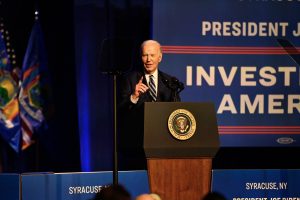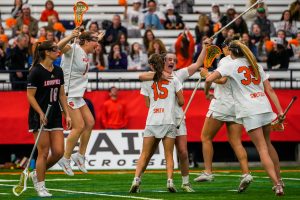How the Syracuse Challengers fulfilled a need and a dream
How the Syracuse Challengers paved the way for everyone to play baseball
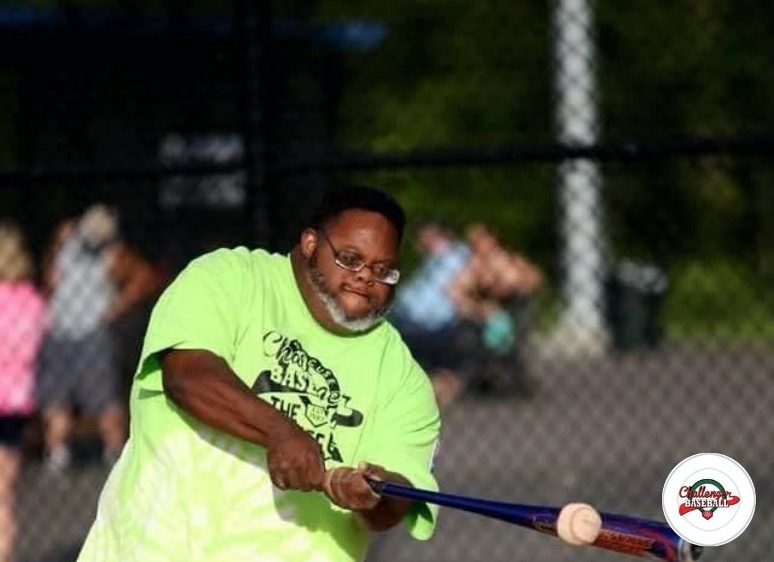
As he walked to the plate, Jamar Reaves heard the ovation his family and friends in attendance gave him. They knew how important this moment was to him.
“Now up to bat for the first time in his Challenger career, Jamar Reaves!” The announcer’s voice echoed around the stadium that hosted the Syracuse Challengers’ 2015 opening day game. Reaves, 39, rose from the dugout and walked out to the batter’s box with his baseball bat in hand. He placed himself in the left-handed side of the batter’s box, tapped his bat on the center of home plate, raised his right arm, and pointed straight to center field, just as Babe Ruth did in the 1933 World Series.
He took a deep breath and composed himself. On the first pitch of the at-bat, Reeves made contact and hit a fly ball just above the second baseman’s head and into shallow center field. As Reaves dropped his bat and sprinted to first base, tears filled the eyes of his family and friends. They watched Reaves live out a dream he had imagined millions of times over in his head.
“It’s hard to define the look on parents’ faces who see their children experience something that early,” said Challengers photographer and Syracuse University adjunct professor Herm Card. “To see youngsters with an unbelievable disarray of disabilities to be laughing, giggling, and running around doing something.”
Reaves has been a die-hard sports fan his entire life. He watched his younger cousins compete in various sports and followed baseball in his free time. For years, Reaves was unable to compete in Little League because of his developmental disabilities, which made it hard for him to play baseball. He couldn’t suit up for the Challengers because he exceeded their age limit at the time.
The Syracuse Challengers offer a unique service to disabled children, adults, and their families, enabling them to discover their individual value. When Patricia Stackwell, Reaves’ mother, found out there was a baseball league for disabled adults launching in 2015, she immediately enrolled her son in the program. Reaves continued playing baseball for the Challengers for five years, until the 2021 season, when he passed away on April 17 at 44 years old.
Dom Cambareri, Executive Director of the Syracuse Challengers, wanted to find a way to honor the legacy and impact of such a special person and player after hearing the news of Reaves’ passing.
“On opening day, we had a gigantic tribute to Jamar, with his number patched onto all of our new jerseys and celebrated his life with his family,” said Cambareri.
As Reaves’ story shows, Syracuse Challenger baseball is all about giving disabled people the opportunity to live out their dreams, compete, and have an accepting community, on and off the field. However, this type of opportunity wasn’t always accessible to disabled children and adults.
Sheldon ‘Skip’ Soule came up with the idea for a baseball league for disabled people in 1981. Soule founded Challenger baseball after talking with his wife about their nine-year-old son with developmental disabilities moving up from the instructional level of Little League Baseball to the minor league level.
When Soule’s wife asked him about his stance on their son playing at the minor league level, Skip initially doubted his son’s ability to react to a ball thrown or hit towards him. But as time passed, his mind kept coming back to the same question: Why couldn’t his son play?
“It bothered me. Why can’t he have a place to go and play?” Soule said. “I had been involved in Little League for years and the idea hit me: Yes, he can play.”
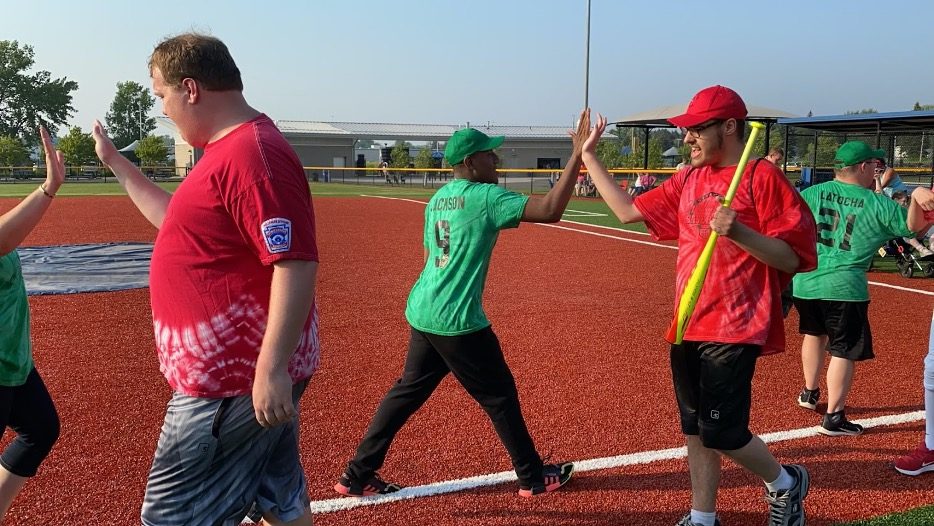
From that moment on, Soule devoted himself to creating a baseball league for disabled children like his son to have the opportunity to compete. To make his idea a reality, he had to leave his position with Little League. Soule later presented the idea to a Little League district administrator he used to work with. His former coworker thought it would be a great addition to Little League, which was trying to grow on a national scale at the time.
When the idea was passed to Little League executives, the lawyers who represented the organization were worried about insuring the kids if anything were to happen to them while playing. This concern was enough to shoot down the idea of Challenger Baseball being a part of Little League Baseball.
Since Soule previously worked at the district level in Syracuse, he used his network within the area to help him find families with disabled children who would be interested in this branch of youth baseball. While Skip searched for families throughout Syracuse and Central New York, the Assistant District Supervisor for Disabled Children approached him about the idea.
“He said I can’t give you names or addresses or nothing, but if you send a letter, I’ll make sure it gets in to all the appropriate hands,” Soule said. “Every kid in the area who would be eligible for this program will know about it.”
Soule started his own baseball league for disabled children in 1982, without any affiliation with Little League baseball, after organizing a group of 15 disabled kids and their families looking to participate. The bang for participants’ buck was each kid receiving ice cream sundaes and participation trophies after the final game of the season.
Without an affiliation with Little League Baseball, the Challengers were forced to play at multiple locations across the county to ensure each team played an equal number of games each season. The problem wasn’t that they were playing at different fields, it was that the fields were not all accessible for the children who were competing.
Before the 1989 season, the league added enough players to field six teams. After seven successful years running his league, Skip got a call from the Syracuse Little League District Administrator, informing him that the organization was ready to incorporate his disabled children’s baseball division for the ‘89 season.
The rest was history.
In 2004, Cambareri decided to change league rules limiting new participants, opening the league to any disabled child in the area, which led to unprecedented growth. From 2004 through 2006, the Challenger league more than doubled in size from 60 players to 130. Since the Syracuse Challengers joined Little League baseball, they have grown to 14 teams across three different divisions: Junior, Adult, and Senior.
They even have a place to call their home, the Carrier Park Field of Dreams, which opened in 2016. The process to build this field started over 10 years ago, and took effort from all members of the community to get it done.
“While the league was growing, and that was the successful part, the difficult part was we couldn’t find fields for our kids to play,” Cambareri said. “Because now we had to expand the number of teams, meaning we needed a greater number of fields for our kids to play at.”
With accessibility problems at the parks due to the large number of new participants playing and being second priority to the Little League playoff games, something needed to change for the Challengers.
“The kids weren’t allowed to play until after the Little League season was over,” said Ellen Weinstein, a parent of a Syracuse Challenger player. “The fields were really limited to the regular league, so really it pushed them into the end of June into July with a lot of the kids off at camp.”
Cambareri thought it was time for the Challengers to have a new home, one that would be built from the ground up to avoid the accessibility and field issues. “How great would it be if Syracuse Challenger Baseball had a set of fields of its own to play on?” said Cambareri.
After speaking with Central New York town officials about the idea for the field, he was connected with an old friend who happened to be the supervisor for the town of DeWitt. The supervisor told Cambareri about possible locations for the park to be built. In 2009, the two formed a committee with other interested parties to put together a design for the field.
In 2010, a location was selected: a 24-acre Carrier Corporation employees’ park near exit 35 Carrier Circle. The park space wasn’t being utilized, so the Carrier Corporation decided to donate the park to the town of DeWitt as long as it remained a park.
Cambareri credits a fundraising dinner he held in 2012 as being the major turning point that helped make his vision a reality. Before the event, he spent weeks cultivating a list of local business leaders and state and local representatives to invite to the fundraiser. Most accepted his invitation, which left only more thing for Cambareri to do: Sell them on his vision.
Cambareri then constructed a presentation to sell the idea to his attendees, which included testimonies from the architect of the field and the county comptroller, and a closing statement from himself. When he took the stage, Cambareri said he made a “passionate plea” to all those in attendance about what building this field could mean to the entire community, not just the disabled residents of Central New York.
“It is of paramount importance that our children and young adults, irrespective of their abilities, are all able to play and recreate together at the same facility,” Cambareri said during the address. “No one should be excluded because of a developmental, physical or other type of impairment.”
Through Cambareri’s powerful communication, the community bought into his vision, and so did the town of Dewitt.
“When Dom first told me what he wanted to do and what the cost would be, I knew that if anybody would be able to raise this money, it’s him,” said Soule.
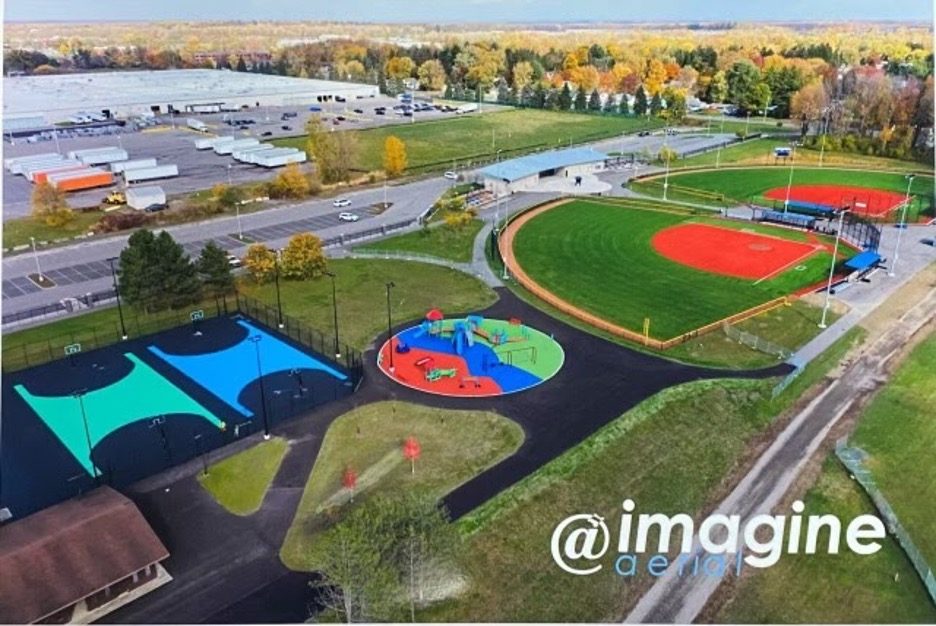
From 2011 to 2012, Cambareri and his committee fundraised for the field. Over that time, they raised over a million dollars through public bonds, private bonds, and funds donated from residents of the community. The town of DeWitt took out a 4 million dollar bond, securing the remaining funds the Challengers needed.
The first phase of the Carrier Park Field of Dreams was finished just before the start of the 2016 season. It included two Little League diamonds, two main entrance buildings and infrastructure to support up to eight additional fields and courts.
Cambareri recently completed phase two of Carrier Park, which included a fully accessible playground, and reopened three fully accessible championship outdoor basketball courts. Cambareri and his team are working on phase three–“the superfield”–an artificial turf field that will accommodate six little league baseball games, four softball games, or two full 90-foot diamond baseball games.
The way everyone, whether it is families of people with disabilities or anyone else in the community, rallies together in support is what makes this organization a fixture in Syracuse.. The combination of what the Syracuse Challengers provide to families through their service and the selflessness of community members is why the program has the capacity it does today and why it’s a model for cities across the country.
“Whether it’s with baseball or any other sport or activity, that is the fundamental reason why communities exist,” Camberari said. “We exist to develop our families and our children and give them opportunities, so that when they become adults, they can be productive members of society.”


